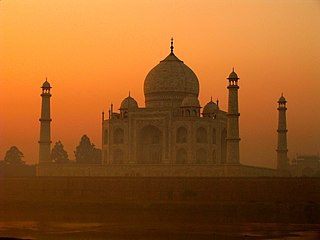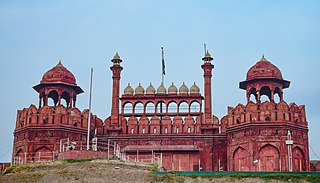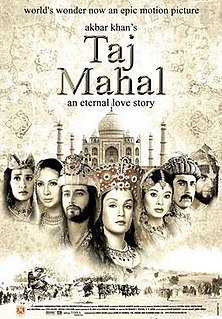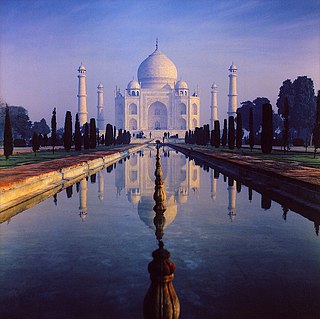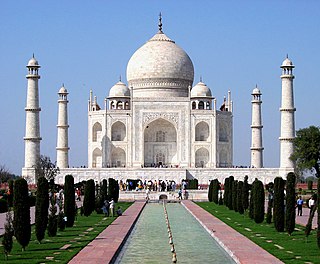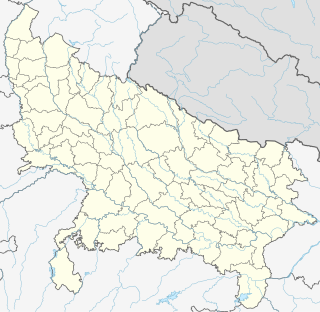The Shahi Qila was a majestic palace in Burhanpur, located to the east of the Tapti River. Little except ruins remain of the palace. However, the parts that still stand display amazing works of sculpture and exquisite carvings.
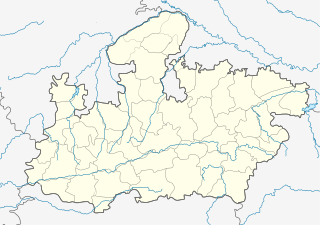
Burhanpur is a mid size district in the. region of Madhya Pradesh state, India. It is the administrative seat of Burhanpur District. It is situated on the north bank of the Tapti River, 340 kilometres (211 mi) southwest of Bhopal and 540 kilometres (336 mi) northeast of MumbaiThe city has a Municipal Corporation,and is also district headquarters of the state of Madhya Pradesh.

The Tapti River is a river in central India between the Godavari and Narmada rivers. It flows westwards over a length of 724 km (449.9 mi) before draining through the Gulf of Khambhat into the Arabian Sea. It flows through Surat, and is crossed by the Magdalla ONGC Bridge.
Contents


History of the Shahi Qila states that it was originally built by the Farooqui rulers and resided by Shah Jahan, at a time when he was the governor of Burhanpur. Shah Jahan became so fond of the fort that it was here, in Shahi Qila that he establishes his court for the first three years of his ascending the throne.Shah Jahan spent a considerable time in this city, and helped add to the Shahi Qila. Diwan-i-Aam and Diwan-i-Khas were built on the terrace of the Qila.

The Farooqi dynasty' was the ruling dynasty of the Khandesh sultanate from its inception in 1382 till its annexation by the Mughal emperor Akbar in 1601. The founder of the dynasty, Malik Ahmad participated in a rebellion against the Bahmani ruler Muhmmad Shah I in his early years. When he was compelled to flee from Deccan, he established in Thalner on the Tapti River. After receiving the grant of the fiefdoms of Thalner and Karanda from Firuz Shah Tughluq in 1370, he conquered the region around Thalner, which later became known as Khandesh. By 1382, he started ruling independently. Malik Raja claimed his descent from the second Caliph Umar-al-Faruq. Hence, the dynasty founded by him was known as Faruqi dynasty. The next ruler, Nasir Khan conquered the Asirgarh fort and made it his capital. He founded the new capital Burhanpur in 1399. The most illustrious ruler of this dynasty was Adil Khan II. During his long reign, Burhanpur was transformed to a major centre for trade and textile production. In 1599, Akbar’s army occupied Burhanpur and on January 17, 1601 the citadel of Asirgarh also fell after a long siege. The last ruler Bahadur Shah surrendered to the Mughals. Khandesh became a Mughal Subah. The rulers of Faruqi dynasty were known as who fought against the Hindus and also the Shia's.

Shahab-ud-din Muhammad Khurram, better known by his regnal name Shah Jahan, was the fifth Mughal emperor, who reigned from 1628 to 1658.
The Shahi Qila, Burhanpur is mostly in ruins now, except a few beautifully carved parts of the palace that still stands as a symbol of the glorious Qila it was in the olden days. The locals call the Shahi Qila 'Bhulbhulaya' (that means a labyrinth) because the architecture of the Shahi Qila is puzzling and perplexing for a casual visitor.
The main attraction at the palace is the hamam or the royal bath. It was specifically built for Shah Jahan's wife, Begum Mumtaz Mahal, so that she could enjoy a luxurious bath in water scented with khus, saffron and rose petals. Hammam Khana was constructed during Mughal Period. The baths bear an inscription of Khan Khana Mirza Abdul Rahim Khana, the famous minister of Akbar and Jahangir. The rooms have domed roof. The Hammam is beautifully decorated with paintings on honey comb work. Even today, the ceiling has many intricate paintings. One of these paintings depicts a monument which is said to have been the inspiration for the Taj Mahal. One of the amazing facts is that the Taj Mahal was originally supposed to have been built at Burhanpur. The site chosen for it still lies vacant near the tapti river. Mumtaz, in whose memory the Taj Mahal was built, died in burhanpur while giving birth to her fourteenth child. [1]

Mumtaz Mahal was Empress consort of the Mughal Empire from 19 January 1628 to 17 June 1631 as the chief consort of the Mughal emperor Shah Jahan. The UNESCO World Heritage Site Taj Mahal in Agra, often cited as one of the Wonders of the World, was commissioned to act as her final resting place.

The Taj Mahal is an ivory-white marble mausoleum on the south bank of the Yamuna river in the Indian city of Agra. It was commissioned in 1632 by the Mughal emperor, Shah Jahan, to house the tomb of his favourite wife, Mumtaz Mahal. It also houses the tomb of Shah Jahan, the builder. The tomb is the centerpiece of a 17-hectare (42-acre) complex, which includes a mosque and a guest house, and is set in formal gardens bounded on three sides by a crenellated wall.





